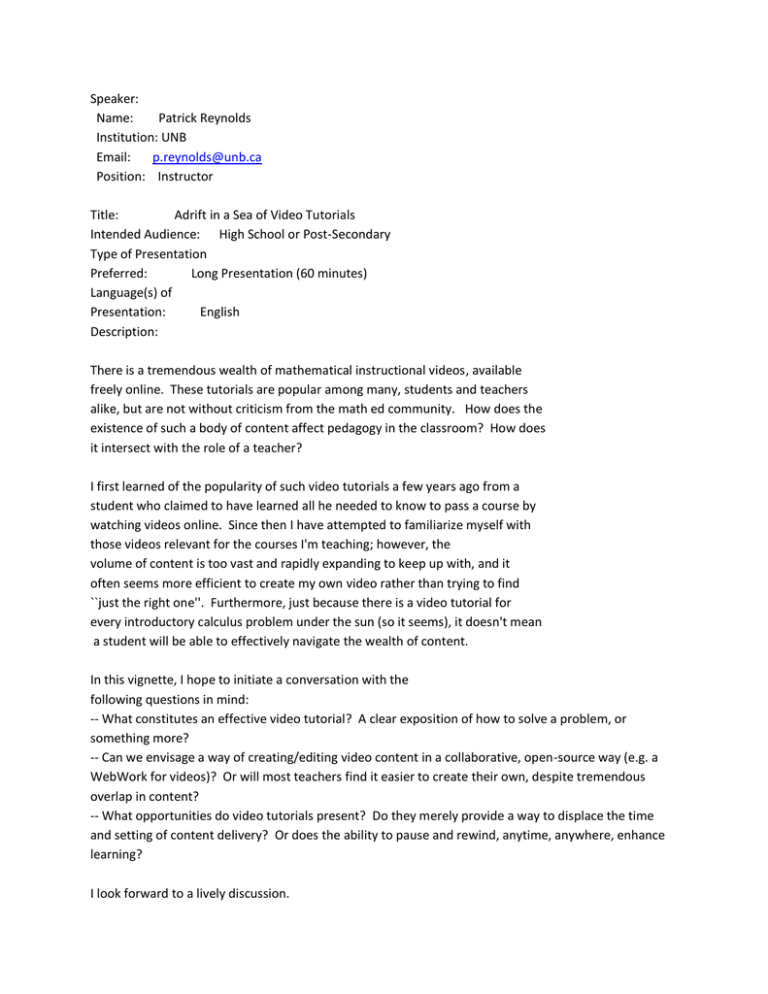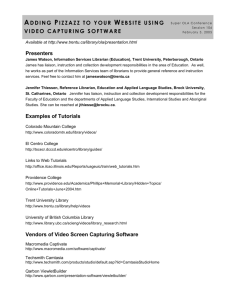Speaker: Name: Patrick Reynolds Institution: UNB Email: p.reynolds
advertisement

Speaker: Name: Patrick Reynolds Institution: UNB Email: p.reynolds@unb.ca Position: Instructor Title: Adrift in a Sea of Video Tutorials Intended Audience: High School or Post-Secondary Type of Presentation Preferred: Long Presentation (60 minutes) Language(s) of Presentation: English Description: There is a tremendous wealth of mathematical instructional videos, available freely online. These tutorials are popular among many, students and teachers alike, but are not without criticism from the math ed community. How does the existence of such a body of content affect pedagogy in the classroom? How does it intersect with the role of a teacher? I first learned of the popularity of such video tutorials a few years ago from a student who claimed to have learned all he needed to know to pass a course by watching videos online. Since then I have attempted to familiarize myself with those videos relevant for the courses I'm teaching; however, the volume of content is too vast and rapidly expanding to keep up with, and it often seems more efficient to create my own video rather than trying to find ``just the right one''. Furthermore, just because there is a video tutorial for every introductory calculus problem under the sun (so it seems), it doesn't mean a student will be able to effectively navigate the wealth of content. In this vignette, I hope to initiate a conversation with the following questions in mind: -- What constitutes an effective video tutorial? A clear exposition of how to solve a problem, or something more? -- Can we envisage a way of creating/editing video content in a collaborative, open-source way (e.g. a WebWork for videos)? Or will most teachers find it easier to create their own, despite tremendous overlap in content? -- What opportunities do video tutorials present? Do they merely provide a way to displace the time and setting of content delivery? Or does the ability to pause and rewind, anytime, anywhere, enhance learning? I look forward to a lively discussion.
